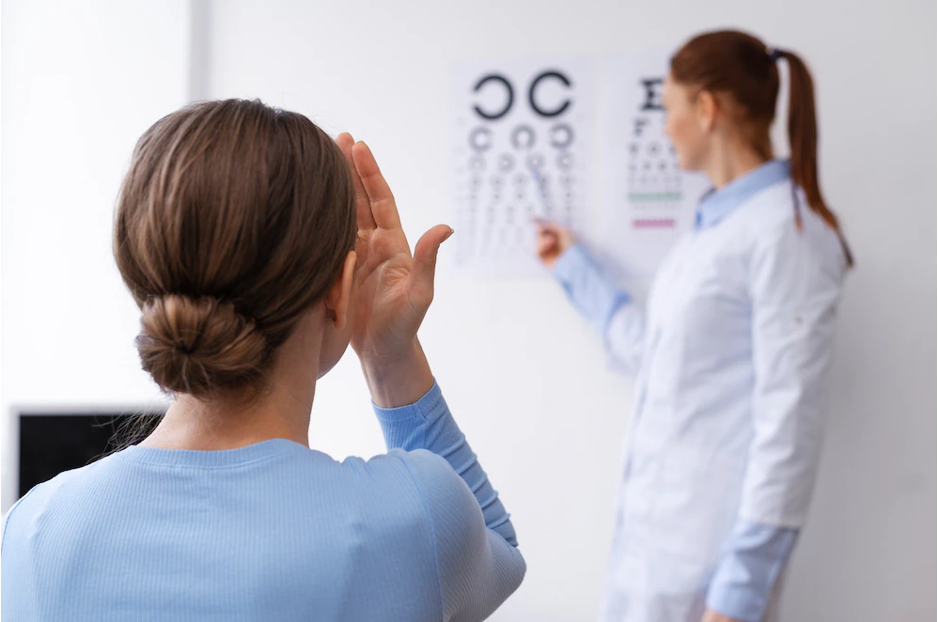As people age, cataracts become more common. Cataracts occur when the natural lens of the eye becomes cloudy. This can lead to vision issues. It is important to detect cataracts early in order to manage them effectively and preserve your vision. You can seek medical advice sooner if you are aware of the symptoms. This blog explores six signs that can indicate cataracts. You can protect your eyesight by being aware of the symptoms.
Table of Contents
1. Cataracts: What are the causes?
There are many factors that can cause cataracts. The most important cause is aging. As we age, proteins in our eye lenses can form clumps, causing cloudy areas and affecting vision. Smoking and excessive alcohol consumption are also contributing factors. Some medical conditions, such as diabetes and the prolonged use of corticosteroid medication, can increase your risk of developing cataracts. You may be at a higher risk of developing cataracts if you have a history of the condition in your family. Cataracts can be caused by eye injuries or previous surgeries.
2. Cloudy or Blurry Vision
The most common sign of cataracts are blurry or cloudy eyesight. This occurs when the lens of the eyes becomes more opaque and scatters light, making it harder to see clearly. Your vision may appear like looking through a fogged window. It can make it difficult to do everyday tasks like reading, driving or recognizing people. As the cataract progresses, blurry or cloudy eyesight will usually worsen over time. This can occur in either one eye or both, and may not be symmetrical. Consult an eye doctor if you have persistent blurry sight that doesn’t improve with contact lenses or glasses.
3. Difficulty seeing at Night
A difficulty in seeing at night is another sign of cataracts. Cataracts may make it difficult to see at night. Driving at night can be difficult because streetlights and oncoming headlights can create halos and glare, making it hard to see the road. It can be difficult to see at night, which can affect other activities such as reading or walking in dimly lit areas. You may have cataracts if you notice your night vision deteriorating. A thorough eye exam can determine the root cause of night vision issues and provide you with the appropriate treatment.
4. Sensitivity To Light And Glare
Another common cataract symptom is increased sensitivity to light. It can be difficult to see in bright sunlight, headlights, or indoor lighting. You may find that you are squinting more or wearing sunglasses to reduce glare. This can affect your everyday activities and your quality of living. The lens of the eye is affected by cataracts, which scatters light into the eye. This causes glare as well as a reduction in contrast. You should seek an eye exam to determine the cause if you are experiencing these symptoms. The right diagnosis and treatment will help you to alleviate any discomfort caused by light sensitivity, and can improve your vision.
5. Change prescription glasses or contact lenses frequently
It could be an indication of cataracts if you notice that your prescriptions for contact lenses or glasses are changing more often than usual. The development of cataracts can lead to fluctuations in vision. Your current glasses or contacts may no longer offer clear vision. This frequent change can be both frustrating and expensive. You should monitor your prescription changes and communicate them with your eye doctor. By addressing cataracts, you can improve your vision and avoid frequent changes in prescription.
6. Fading or Yellowing Colors
Cataracts may cause colors to look faded or yellowed. The cloudy lens can cause a discolored and dulled perception of the environment. Whites may appear yellower and bright colors less intense. It can affect activities that require color differentiation such as choosing clothing or creating creative projects. The yellowing or fading of colors can make daily tasks less fun. Have your eyes checked if you notice a change in the way you perceive color.
The conclusion of the article is:
Early diagnosis of cataracts can allow you to seek medical treatment and advice. Common indicators include blurry or cloudy vision and difficulty seeing at night. They may also be accompanied by increased sensitivity to glare and light. Cataracts can be detected by frequent changes in contact lenses or prescription glasses, as well as fading of colors or yellowing. Preventive measures can be taken by understanding the causes of cataracts such as ageing, UV exposure and certain medical conditions. Schedule an eye exam if you notice these symptoms to determine the cause of cataracts and discuss treatment options.

